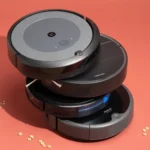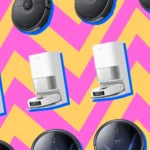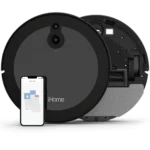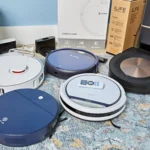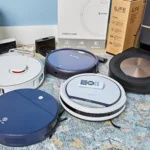As technology continues to shape the way we live, it’s no surprise that our homes are getting smarter every day. From voice-activated assistants to temperature-controlled thermostats, there’s no end to the conveniences that smart home integration has brought us. One area of the home that’s seen significant transformation is cleaning, particularly vacuuming. But with the multitude of options out there, it’s easy to feel perplexed about what the future holds for remote vacuum scheduling and smart home integration. In this article, we’ll explore the current state of vacuuming, the limitations of vacuum scheduling, the future of remote vacuum scheduling, as well as the role of smart home integration and the challenges we must overcome to fully reap its benefits. So fasten your seatbelts and let’s dive in!
The Current State of Vacuuming
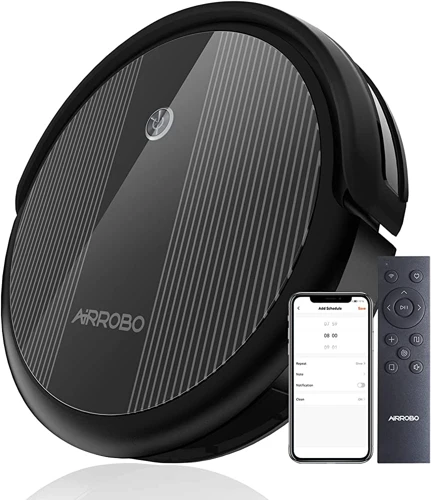
As smart home technology advances, many homeowners are turning to remote vacuum scheduling for convenience and simplicity in their cleaning routines. However, as with any developing technology, there are still some limitations to overcome. In this section, we will take a closer look at the current state of vacuuming, including the challenges of vacuum scheduling limitations and the benefits of smart home integration. For those looking to optimize their remote vacuum scheduling, we will also provide advice on maximizing its potential.
Vacuum Scheduling Limitations
When it comes to vacuum scheduling, there are several limitations that can hinder the user experience. These limitations include:
| Issue | Description |
| Device Connectivity | One of the primary limitations of remote vacuum scheduling is device connectivity. Many users face issues with their devices not connecting to the internet or the app, which can prevent the schedule from being set or updated. Troubleshooting these issues can take time and effort. |
| Setup Complexity | Setting up a remote vacuum schedule can be complex, especially for users who are unfamiliar with smart technology. This can involve configuring the vacuum and the app, as well as ensuring that both are properly connected to the internet. Setup complexities can lead to confusion and frustration for users, especially if they are unable to schedule the vacuum properly. |
| Limited Control | Remote vacuum scheduling typically provides limited control over the vacuum’s operation, which may not be ideal for all users. Some schedules may only allow the vacuum to clean at certain times or on certain days, and cannot be customized to suit the user’s needs. This limitation can result in a less efficient or effective cleaning process, especially if the user needs to clean more frequently than the schedule allows. |
| Updates | The app that controls the vacuum can sometimes have unexpected updates, resulting in a need for troubleshooting to keep the vacuum up to date with the new updates. The updates can sometimes cause a disconnect between the vacuum and the app and could require users to troubleshoot the issue themselves, even if they are not technically savvy. |
While these limitations can be frustrating for users, there are ways to overcome them. By understanding the limitations, users can take steps to mitigate these issues and enjoy a more efficient and effective cleaning process. Additionally, staying up to date on the latest developments and troubleshooting techniques can help users maximize the benefits of remote vacuum scheduling and make the most of their smart device.
Smart Home Integration
Smart Home Integration is an essential component of remote vacuum scheduling. It refers to the process of connecting various smart home devices to work cohesively with each other. In the context of remote vacuum scheduling, it means having the smart vacuum work seamlessly with other smart home devices to enhance its functionality and convenience.
The Benefits of Smart Home Integration in Vacuum Scheduling
Smart home integration not only creates a cohesive ecosystem of smart devices but also allows for some unique functionality. For instance, you can use your virtual assistant, like Amazon Alexa or Google Assistant, to give voice commands to start, stop or schedule vacuuming. It eliminates the need to physically interact with the device, making it more efficient and convenient.
Integrating the smart vacuum with other devices like locks and thermostats can further automate and streamline household tasks. For example, if a guest rings the doorbell when the vacuum is running, it can pause vacuuming and start again once the guests leave, without any manual intervention.
Here is a table that highlights some benefits of smart home integration in vacuum scheduling:
| Benefits of Smart Home Integration |
|---|
| Hands-free operation using voice commands |
| Integration with other devices streamlines household tasks |
| Allows more advanced scheduling options |
| Improves energy conservation by coordinating with other devices |
Upcoming Developments in Smart Home Integration
With the increasing popularity of smart homes and the internet of things (IoT), there has been a push for more universal compatibility among smart devices. Compatibility challenges across device brands have been a significant issue for smart home integration. However, upcoming developments may address this issue by standardizing communication protocols across various brands and products.
This standardization will ease the integration of various devices and increase the options available for homeowners looking to automate their homes.
Smart home integration plays a crucial role in enhancing the functionality of remote vacuum scheduling. As technology continues to advance, we can expect to see more developments in smart home integration, allowing for better automation, energy efficiency, and convenience.
If you’re interested in exploring more about remote vacuum scheduling and smart home integration, check out our article on comparing smart vacuum scheduling options or tips for troubleshooting remote vacuum scheduling issues.
The Future of Remote Vacuum Scheduling
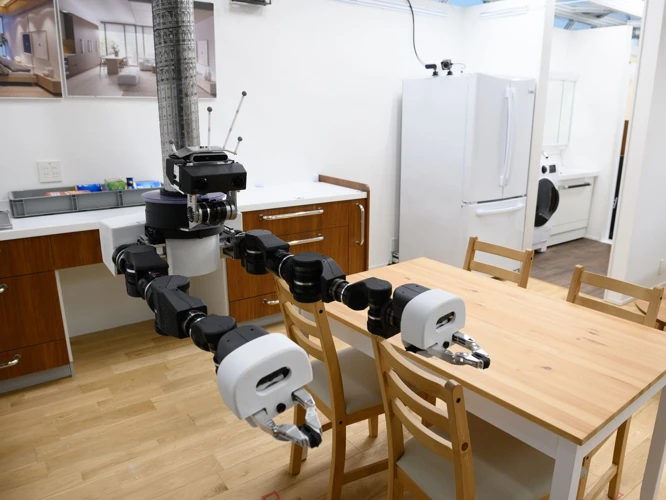
In today’s fast-paced world, individuals seek ways to make their lives easier and more convenient. With the advent of technology, daily chores are becoming more accessible, such as vacuuming. The future of remote vacuum scheduling is an exciting prospect, with many advancements and features that can simplify and transform household cleaning. This part of the article will delve into some of the key developments in remote vacuum scheduling, including AI-enabled cleaning and voice-activated vacuuming. Additionally, we will explore how smart home integration plays a vital role in maximizing the potential of remote scheduling. We will also examine the challenges that come with these advances, including data security concerns and compatibility issues. So let’s dive deep into the upcoming trends and possibilities of remote vacuum scheduling.
AI-Enabled Cleaning
AI-Enabled Cleaning is set to be the future of remote vacuum scheduling. Cleaning with Artificial Intelligence isn’t a new concept, but incorporating it into a vacuum is. With AI-enabled cleaning, vacuum cleaners can become more efficient, thorough, and customized to fit each user’s unique needs.
AI technology enables the vacuum cleaner to analyze the cleaning needs of the environment, the layout and the type of flooring to formulate the most effective cleaning plan. These vacuums can detect high-traffic areas, pet hair, and other debris that need extra attention. This means that the vacuum cleaner can cover all the areas that may get overlooked by traditional methods.
The Benefits of AI-Enabled Cleaning
The benefits of AI-enabled cleaning are numerous. These vacuums can work for longer periods, owing to their advanced power-saving capabilities, in addition to using less energy than traditional machines. They are also capable of resuming the cleaning process from where they left off should anything interrupt their activity like an incoming call or any other obstacle.
AI-enabled vacuums can save users time by providing tailored cleaning services that rival traditional cleaning methods. Aside from that, AI-enabled vacuum cleaners can create digital maps of the home for future use. These maps enable machine learning algorithms to optimize cleaning schedules depending on changing home conditions.
Comparison with Traditional Methods
Compared to traditional cleaning methods, AI-enabled vacuum cleaners offer a more consistent level of performance. With the vacuum cleaners’ ability to map your home, you can have peace of mind knowing that every corner of your house is getting cleaned. AI-enabled vacuums also come equipped with sensors that help them avoid obstacles when cleaning and keep them from tumbling downstairs.
Conclusion
AI-Enabled Cleaning is undoubtedly the future of remote vacuuming scheduling. These machines offer more advanced and efficient cleaning services than traditional vacuum cleaners. With its tailored cleaning capabilities, it is no wonder that AI-enabled vacuum cleaners are becoming more prevalent. As technology continues to evolve, and new AI-powered features get added, the future of vacuuming will become more exciting than ever before.
Maximizing remote scheduling is an essential aspect of AI-enabled cleaning. By programming the vacuum cleaners to clean at specific times, users can optimize their cleaning schedule with ease.
Voice-Activated Vacuuming
Voice-activated technology has been rapidly gaining popularity in recent years, and it comes as no surprise that it is making its way into the world of smart vacuums. With voice-activated vacuuming, homeowners can simply tell their smart home assistant to start or stop the vacuum, or even to clean a specific area. This feature offers a more convenient and accessible cleaning experience for users, as they don’t even need to push a button to activate their vacuum.
One of the main benefits of voice-activated vacuuming is that it can save time and energy. For example, if someone spills crumbs on the floor while cooking, they can simply tell their smart home assistant to clean up the mess without having to pause or interrupt their cooking. It can also be helpful for those with mobility issues who may have difficulty reaching the vacuum or pressing buttons.
However, it is important to note that not all voice-activated vacuums are created equal. Some may have better voice recognition capabilities than others, and it is important to do proper research before purchasing one. Additionally, there may be concerns regarding privacy and security with constantly having a device listening for voice commands.
Voice-activated vacuuming is an exciting development in the world of remote vacuum scheduling and smart home integration. It offers a new level of convenience and accessibility for users, while still maintaining efficient cleaning capabilities. For a comparison of smart vacuum scheduling options, see our article on comparing smart vacuum scheduling options. To learn more about the energy-saving benefits of remote vacuum scheduling, check out our article on remote vacuum scheduling and energy conservation.
The Role of Smart Home Integration
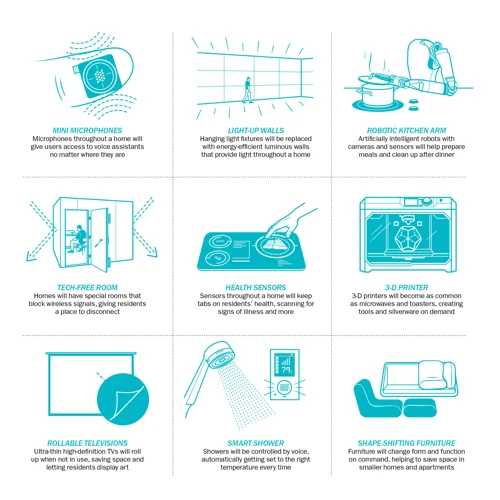
As technology continues to evolve, we are seeing more and more integration of smart devices in people’s homes. Smart home integration has made it possible to control various aspects of your living space from the palm of your hand. One area where this integration is becoming even more apparent is with the use of smart vacuums. The ability to control and schedule when your vacuum cleans through remote scheduling is incredibly convenient and accessible. However, the integration of these devices does come with challenges, particularly regarding security. In this section, we will explore the role of smart home integration in the future of vacuuming, along with the benefits and challenges that come with it.
Benefits of Integration
The integration of smart home technology with remote vacuum scheduling provides several benefits for homeowners, making it easier to maintain a clean home without dedicating precious time or effort to the task. Some noteworthy benefits of integration include:
- Convenience: With remote vacuum scheduling, homeowners can schedule cleaning tasks regardless of their location, making it possible to have their homes cleaned and ready to go by the time they arrive home. This level of convenience is particularly useful for working professionals with busy schedules who would rather come home to a clean house than spend their evenings vacuuming.
- Accessibility: Remote vacuum scheduling also offers accessibility benefits for those with mobility issues or disabilities. This technology can help them maintain a clean home without having to exert additional energy or compromising their safety.
- Security: Smart home integration offers increased security for homeowners. With remote monitoring, homeowners can track their smart vacuum’s progress, ensuring that it is not malfunctioning or presenting a security risk. By integrating this technology with home security systems, homeowners can ensure that they are aware of activity in their homes, providing an additional layer of protection.
- Customizability: Integration also offers customizability to homeowners. With customizable features, homeowners can personalize their cleaning schedules and preferences, ensuring that their home is cleaned according to their unique needs.
As the popularity of smart home technology and remote vacuum scheduling continues to grow, it becomes increasingly important for homeowners to explore the various benefits of integration. By doing so, they can enjoy a clean home without sacrificing time, effort, or security.
Upcoming Developments in Integration
The future of remote vacuum scheduling looks promising with upcoming developments in smart home integration. Here are some of the improvements we can look forward to:
- Increased compatibility: Currently, some smart vacuums may not be compatible with certain smart home systems, which limits their usefulness. However, technology companies are working to create more universal standards for smart home integration, which could allow for better compatibility across devices and brands.
- Enhanced voice commands: Voice-activated vacuuming has already revolutionized the way we clean our homes, but there is still room for further development. In the future, we can expect to see more advanced voice commands that allow us to control our smart vacuums with greater precision, such as directing the vacuum to specific areas or asking for cleaning updates.
- Improved AI technology: As AI technology continues to advance, smart vacuums will be able to better adapt to their surroundings and provide more customized cleaning experiences. This could include automatically adjusting to different floor types or cleaning patterns based on our individual habits and preferences.
- Integration with other smart devices: Smart homes go beyond just vacuums and cleaning – they encompass a wide range of connected devices. In the future, we can expect to see even greater integration between smart vacuums and other devices, such as smart thermostats or security systems. This will allow for greater convenience and accessibility in our daily routines.
While there are certainly challenges to overcome, such as data security concerns, the potential benefits of smart home integration and remote vacuum scheduling are undeniable. With continued advancements and improvements, we will likely see even greater changes in the way we approach cleaning in our homes. Want to learn more about the convenience and accessibility of remote scheduling and smart vacuum technology? Check out our previous article on the subject. Concerned about the security of smart vacuum remote scheduling? We’ve covered that too in another article.
Challenges to Overcome
As promising as the future of remote vacuum scheduling and smart home integration may seem, there are a number of obstacles that must be overcome to achieve a fully integrated and secure system. The integration of various devices and the sharing of data brings with it a host of challenges, including concerns over data security and compatibility issues. These challenges require careful consideration and innovative solutions to ensure that the potential benefits of vacuum scheduling and smart home integration can be fully realized. Let’s explore these challenges and the possible paths to navigate them.
Data Security Concerns
As with any connected device in a smart home, there are always concerns regarding data security when it comes to remote vacuum scheduling and smart home integration. Here are some of the top data security concerns to keep in mind:
- Privacy risks: With the ability to control a vacuum remotely, there is a risk of data being collected on the user’s home environment. For example, vacuum usage frequency and times of day could provide insight into the user’s daily routine.
- Data breaches: Any device that connects to the internet has the potential to be hacked. If not secured properly, hackers could potentially gain access to a user’s personal information or control of their smart vacuum.
- Unsecured networks: Connecting to an unsecured wireless network leaves the device vulnerable to attacks. Without proper encryption, data transmitted between the device and the network could be intercepted by a third party.
- Outdated software: If the device’s software is not updated regularly, it may contain vulnerabilities that could be exploited by hackers.
- Vendor trust: Many smart home devices are created by lesser-known brands or startups. Before purchasing a device, it’s important to do research on the vendor’s reputation and security measures.
Given these concerns, it’s essential for smart home manufacturers to take a proactive approach to addressing data security risks. This can include measures such as regular software updates, strong encryption protocols, and third-party security auditing. Smart home users can also take steps to ensure their own data security, such as setting strong passwords and using secure Wi-Fi networks. By being aware of these risks and taking the proper precautions, users can enjoy the convenience of remote vacuum scheduling and smart home integration without compromising their personal data.
Compatibility Across Devices and Brands
As we look towards the future of remote vacuum scheduling and smart home integration, one of the biggest challenges that needs to be overcome is compatibility across devices and brands. While there are many different vacuum brands and smart home systems on the market, they often have different protocols and interfaces, making interoperability a headache for homeowners who are looking to create a seamless smart home experience.
To overcome this challenge, companies in the industry must work together to establish common standards and protocols for devices and systems to communicate with each other. This will potentially eliminate the need for homeowners to purchase only specific, brand-specific devices for complete compatibility, reducing costs and improving the overall smart home experience.
Another solution for compatibility issues is the use of bridge devices, which act as intermediaries between the vacuum cleaner and the smart home hub. These devices are designed to translate different protocols so that devices which may not have been designed to work together can communicate seamlessly.
It’s also important for companies to provide regular software updates and support for their products. This will help ensure compatibility across different software versions and may even bring new features and functionalities to older devices.
However, it’s important to note that advancements in technology and the introduction of new devices may also bring about new compatibility challenges. It’s important for manufacturers and developers to work towards establishing common standards and protocols for communication across devices and brands to provide homeowners with a seamless and hassle-free smart home experience.
Conclusion
In conclusion, the future of remote vacuum scheduling and smart home integration is exciting and rapidly evolving. With AI-enabled cleaning and voice-activated vacuuming, the possibilities for effortless cleaning are endless. Smart home integration offers numerous benefits, such as convenience, control, and energy efficiency. However, challenges must be overcome, such as data security concerns and compatibility issues across various devices and brands.
As technology continues to advance, we can expect to see even more developments in remote vacuum scheduling and smart home integration. Homeowners will have even more control over their cleaning schedules and the ability to maximize their use of smart home devices.
Despite the challenges, the potential benefits of remote vacuum scheduling and smart home integration are too great to ignore. As consumers embrace the convenience and efficiency of these technologies, more companies will focus on innovating the next generation of cleaning tools and home automation devices. The result will be a smarter and more connected home, optimized for maximum comfort, convenience, and cleanliness.
In the end, the future of remote vacuum scheduling and smart home integration is not just about improving cleaning efficiency – it’s about creating a more comfortable and convenient environment for homeowners. With continued innovation and technological progress, the possibilities are endless. So let’s embrace the future of cleaning and see where it takes us.
Frequently Asked Questions
What is remote vacuum scheduling?
Remote vacuum scheduling refers to the ability to schedule when your vacuum will clean your home from a remote location using the internet.
What are the limitations of current vacuum scheduling?
The current vacuum scheduling systems often lack flexibility in terms of scheduling and can only be scheduled manually, limiting their convenience factor.
What is smart home integration?
Smart home integration refers to the ability to control multiple smart devices within your home through a single app or platform.
What are the benefits of smart home integration?
Smart home integration allows for easier control of multiple devices, increased automation, potential energy savings, and improved convenience.
What is AI-enabled cleaning?
AI-enabled cleaning refers to the use of artificial intelligence to enhance the cleaning experience by allowing vacuums to learn and adapt to their environment for improved cleaning efficiency.
How does voice-activated vacuuming work?
Voice-activated vacuuming allows users to control their vacuum through speech commands, providing a hands-free cleaning experience.
What data security concerns should be addressed with smart home integration?
Data security concerns for smart home integration typically involve protecting personal information and preventing hacking or unauthorized access to home devices.
What are the upcoming developments in smart home integration?
Upcoming developments in smart home integration include increased compatibility between devices and more advanced automation capabilities.
What is the main challenge for compatible device integration?
The main challenge for compatible device integration is ensuring compatibility across devices and brands as there are currently many different smart home platforms available.
What is the potential future for remote vacuum scheduling and smart home integration?
The potential future for remote vacuum scheduling and smart home integration is continued development of more advanced automation capabilities and increased compatibility across devices.



